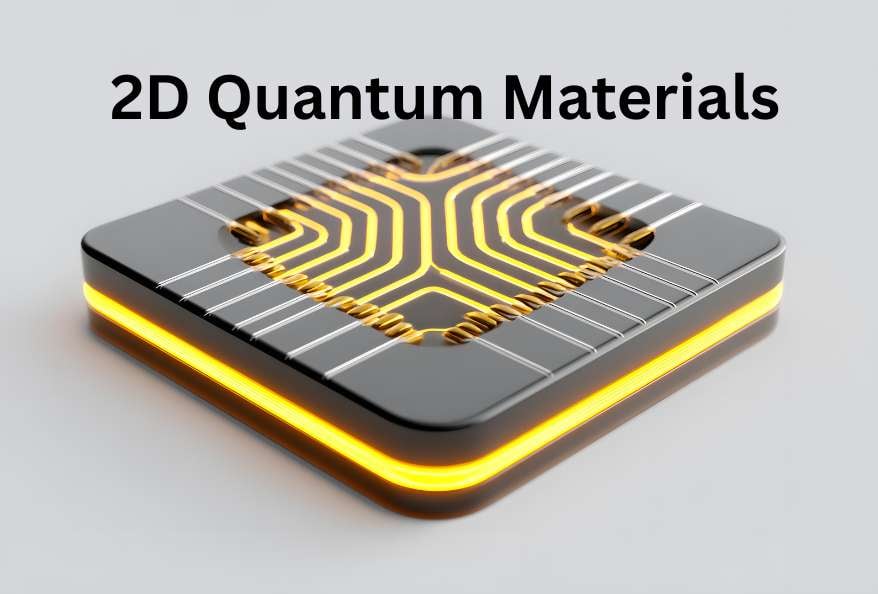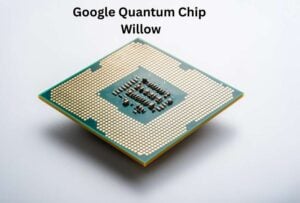2D Quantum Materials: Plasmonic Self-Cavities Revolutionize Van der Waals Heterostructures
In recent research, scientists have explored how tiny stacks of two-dimensional (2D) materials can trap light and electrons, creating special confined waves. These waves, called standing waves, behave like the vibrations on a guitar string but happen at an incredibly small scale inside the materials. This discovery was made possible by using a new chip-scale device that focuses terahertz (THz) light. A type of light with wavelengths much larger than the materials themselves—into areas just a few micrometers wide.
The research team observed that the edges of these 2D materials act like natural mirrors, reflecting electron waves back and forth to form mixed particles known as plasmon polaritons. These hybrid light-matter waves create what scientists call cavities, fully contained regions where light and electrons interact strongly. Understanding how these cavities work provides fresh insights into unexplained quantum behaviors such as unconventional magnetism and superconductivity in 2D systems.
What are Van der Waals Heterostructures?
Van der Waals (vdW) heterostructures are made by stacking extremely thin layers of 2D materials, like graphene and graphite. Hence, to create unique combinations with interesting properties. These tiny layered materials have already shown fascinating effects such as superconductivity, magnetism, and unusual electronic behaviors. Importantly, these effects are highly sensitive to their surroundings and can be controlled by changing the electrical charge inside the material using gates.
Recently, scientists discovered that these 2D materials can form something called plasmonic self-cavities. In simpler terms, this means the materials can trap special terahertz light waves. These are very low-energy waves, making them bounce back and forth inside the material. This happens because of their small size compared to the terahertz light’s wavelength.
What is Ultrafast Plasmonic Coupling?
The trapped light waves inside these cavities can interact strongly with the material’s electrons. When this interaction is very powerful, it is called ultrastrong coupling. Here, even just a few photons (particles of light) or their natural fluctuations can change how the material behaves on a large scale. This gives rise to new states of matter that scientists are eager to understand.
The Role of Graphite Gates
A graphite gate is a thin layer used to control the properties of vdW heterostructures. Since its plasmonic modes also lie in the terahertz range, they can combine or “hybridize” with those in the 2D material underneath. Hence, leading to new hybrid light–matter states. This clever setup offers a way to tweak quantum behaviors by simply adjusting electrical signals.
Advanced Techniques for Studying Terahertz Responses
The challenge has always been measuring how these tiny samples respond to terahertz frequencies. Because their size is much smaller than free-space terahertz waves. Scientists solved this by developing an on-chip spectroscopy system that guides terahertz pulses through metallic circuits directly coupled with the vdW heterostructure. This local probing technique captures both amplitude and phase changes in real-time.
Cavity Conductivity Mapping
This method provides detailed information about what happens when plasmonic self-cavity modes form and interact with each other inside these structures. Researchers observed shifts in resonance frequencies as they changed carrier density electrically. Thus, an exciting confirmation that these cavities indeed influence material behavior dramatically.
The Promise of Non-Perturbative Theories
The team created theoretical models that matched experimental data accurately without simplifying assumptions typically used before. This analytical approach allows prediction and control of how two modes couple depending on geometry and environment. Hence, a significant step towards engineering quantum devices with designed cavity effects.
Why Does This Matter for Future Technology?
This research opens pathways for advanced technologies such as Bose–Einstein condensation of plasmons (where particles behave like one quantum entity). Also, polariton condensation—which merges light and matter—and ultra-sensitive single-photon detectors operating at terahertz frequencies. These breakthroughs could revolutionize communications, computing, sensing, and more.
Additionally, to stay updated with the latest developments in STEM research, visit ENTECH Online. Basically, this is our digital magazine for science, technology, engineering, and mathematics. Furthermore, at ENTECH Online, you’ll find a wealth of information.
Reference
- Kipp, G., Bretscher, H. M., Schulte, B., Herrmann, D., Kusyak, K., Day, M. W., Kesavan, S., Matsuyama, T., Li, X., Langner, . . . . McIver, J. W. (2025). Cavity electrodynamics of van der Waals heterostructures. Nature Physics. https://doi.org/10.1038/s41567-025-03064-8






